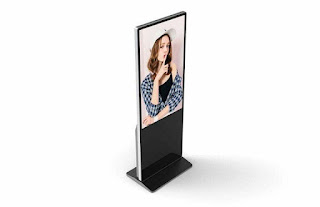The Evolution of Digital Signage Window Displays
Digital signage has become an inseparable part of the business world today. Be it schools, offices, cafeterias, restaurants, shopping malls, banks, or anything else, you can easily find one or several different types of attention-grabbing digital signages. One of these types is Digital Signage Window Display. It is when a digital signage is mounted to the space of a window in any facility. It could be outdoors or indoors or both. In today’s article, we will shed some light on how digital signage evolved into being a window display and what was the need for it.
The Need for Window Displays
With the advancements in technology, digital signages began to become more sophisticated. But people felt that these signages were not being used to their full potential if they were only visible to the customers when they were inside the facilities. But the problem with current digital displays being set up as window displays was that the screens were not compatible with several factors like heat and bright sunlight, which started distorting the images on the digital signages. This is where the idea for developing specific digital window display screens was born.
Evolution Begins
So, with that need, the first High Brightness Displays came into being. The standard digital display used to be about 450 cd per meter square. But these High Brightness solutions have the ability to retain the brightness of about 1500 cd per meter square, which makes it easier to read the content on the screens despite direct sunlight falling on them. Another factor that adds to the appeal of current digital signage window displays is that their temperature can be regulated, so that the quality of the content remains intact and the LCD panel runs at the optimum temperature. So, window displays with in-built temperature control mechanisms were invented.
One of the latest inventions in the field of digital signage window display is for double-sided window displays, which are really commonly used in double side display kiosks among other facilities. Traditional displays were bulky, costly, and they did not look sleek when mounted for both indoor and outdoor displays together. With the evolution of the Hanging double-sided window displays, the problem was solved. These displays look sleek and are easy to install. They make the space look elegant instead of stuffed, as was the case with traditional digital window displays. The difference between the indoor-facing screen and outdoor-facing screen is just that of brightness. The indoor-facing screen has lesser brightness because it does not consider the direct sunlight that will fall on the outside-facing screen.
With keeping these factors in mind, Screenage offers a wide range of digital window display screens in their window-facing display series such as Double-sided Kiosk, Window-facing Hanging Screens, Street Window-facing Display - Industrial Standard, High Brightness Display - I, and Indoor High Brightness Display, which is perfect for any use that a client might have. Feel free to reach out for any queries.




Comments
Post a Comment